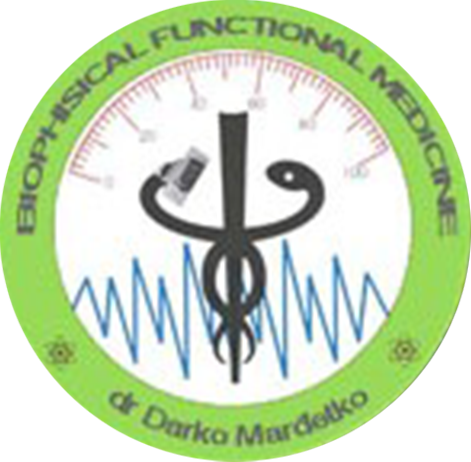C) Diagnostic evaluation
Diagnostic process must explore both polar levels (functional and morphologic plane) .It must allowed the presentation of all cardinal disturbances and patological morphas of particular patient.In this process I suggest following steps:
1. Complete history of a disease: - present disturbance(s), (beginning,unfoldment)
- previous diseases, injuries, operations, vaccinations, toxic reactions, allergies, wrong eating habits, social andecconomic situation, emotional frustrations, psychic stress
- possible hereditary factors
- previous or present medication
2. Physical examination-thoroughly, each body segment with special stress on tumor growth, infection zones, sensitive trigger points, enlarged lymph nodes, dental status (very important because of focal processes and possible influence on internal organs, connective tissue and locomotor system), scars (possible focal points!), blood pressure (left-right), puls quality
3. Evaluation of cardinal symptom- Where is the site? When did it happen? How did it happen?Under which circumstances?
Cardinal symptom gives us an idea about disturbed element.For example gastitis or pancreatitis point out at earth element,fear and anxieties point out on water, temporal migrene point out wood, skin erruptions point out at metal and so on.
4. An evaluation of the causal chain-where is the source of disease and how does it spread its influence on other organs and functional systems.
5. An evaluation of the dominant focus(if there is any!) and its possible influence on clinical picture.
6. Evaluation of chronic stress factors and their influence,primmarily on matrix.
For this purpose the role of chr. psychic stress, bad nutrition with defficiency of nutrients, haevy metal and other enviromental poisoning, infections, geopathy and electromagnetic smog, allergens, foci should be separately explored.
What diagnostic methods can we use to achieve these goals:
1. Functional diagnostics: Computer segment electrography, DFM, Thermography, Kirlian Photography-to reveal energetic situation and regulative capacities.
2. All range of biochemical laboratory diagnostics (from general to specific, depends on patients situation).
3. Structural meassurements-X rays, ultra sound, CT, NMR, patohistological evaluation-only when there is the suspicion or obvious pathomorphologic process.
4. BTA (biological terrain assesment) and STT (metabolic test)- for more precise determination of oxido-reductive stress,acidobasic status,metabolic and hormonal situation
5. Dark field microscopy-immune system checking, endobiotic overload.
6. Electrodermal testings-VEGA test, EAV-biophysical electrodermal testings.
7. Dental checking-very important.
8. Psychospiritual evaluation-very important!, there is always “an idea”behind disease; remember! - first there is a thought (cause) ,then there is a deed (effect).
Biophysical Functional Medicine
dr med Darko Mardjetko
Specialist in family medice
Specialist in biophysical functional medicine
Josipa Kosora 32
23 000 Zadar
Croatia
darko. mardjetko@zd. t-com. hr
Tel +385 23 333 363
Fax +385 23 337 088

